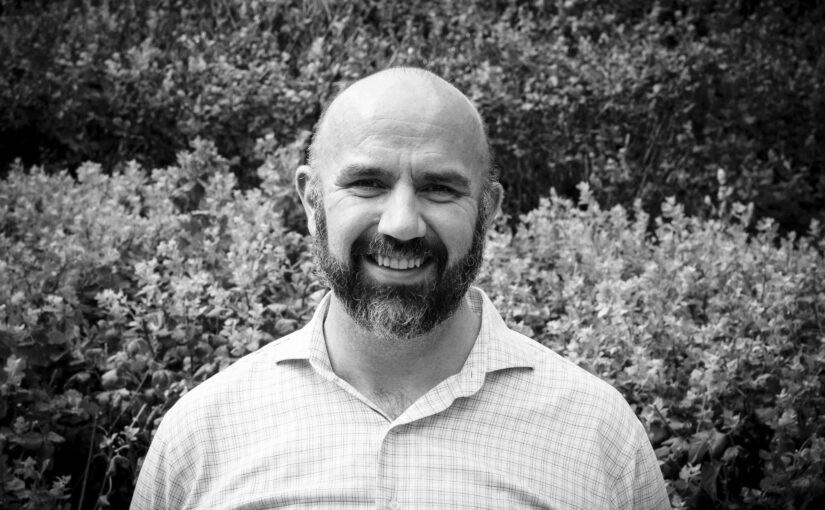
Earlier this month, James (“Jay”) Dickson, stepped into the role as PGC Director. We shared the news in our June newsletter with a glimpse of his professional background (click here if you missed it). We asked more detailed questions about his new role and visions for PGC.
- Tell us where you are from and one (or a few) of the coolest places that you have lived or worked.
- I grew up in Boston and have lived most of my life in New England. But the coolest place I’ve ever lived is along San Antonio Creek in Mt. Baldy, CA, a tiny village of 400 people at 4000’ elevation on the northeastern edge of Los Angeles.
- Tell us about your professional journey. What do you consider the pivotal points that led you to PGC? What has been the biggest surprise in your career thus far?
- I came from the outside in. I studied astronomy as an undergraduate and that led me to become a planetary scientist, mostly studying Mars. Through that research I got very lucky and had the opportunity to do field work in the McMurdo Dry Valleys in Antarctica, so that was the most pivotal moment of my career. I ended up coming back to Antarctica 7 more times, primarily using time-lapse photography and meteorological stations to document subtle changes in the Dry Valleys. During this time I was a PGC user, so I saw what a great partner it is to the science community. I then ran a planetary imaging lab at Caltech for 7 years before joining PGC.
- Why did you choose PGC?
- PGC is a perfect match for my polar science background and my remote sensing experience with NASA. No facility would give me such a great opportunity to combine those two passions so clearly. It also allows me to work on projects at a larger scale than I have before given the terrific staff that have built PGC into the leader that it is. Having driven people around me with skills that I don’t have makes it a perfect fit.
- Coming into this position, what do you see as PGC’s opportunities for growth or challenges over the next five years?
- PGC collaborators are now using computer vision and machine learning techniques with data that we provide to perform tasks at scales and levels of accuracy that were not achievable even 5 years ago. We have the ability to do similar analyses at PGC, which will have benefits to the entire polar science community, not just individual research groups.
- As a polar and planetary scientist, what sorts of trends do you see happening?
- I see a growing overlap between studying extreme regions on Earth and studying planetary bodies. We have had a continuous robotic presence on Mars for two decades and are close to sending humans back to the Moon, so there is an expanding need for integrating remote sensing data from satellites with detailed data from the ground. PGC has spent 16 years perfecting how to support surface operations in extreme locations with large amounts of satellite information. I believe there’s a growing recognition that studying planetary surfaces requires both satellite and surface data, not one or the other.
- What lessons has your professional career taught you?
- The biggest lesson is that solving scientific problems, particularly in extreme locations, requires constant collaboration. Rarely will one data set alone be sufficient to solve a problem, but experts tend to become experts at one very specific thing. So it is important to bring those scientists together and PGC has been the perfect vehicle to make that happen.
- Do you have any favorite stories from your career?
- I had the great fortune to work with Dave Scott, commander of Apollo 15 and one of the few people to have walked and conducted science on the Moon. He visited our lab one time when my mother happened to be recovering from surgery at her home, so we surprised her by setting up a video call with Mr. Scott. She did not know we were doing this until he sat down in front of her. Having followed Apollo in her youth, this was a thrill for her and a reminder to me of the joy, hope and inspiration that exploration can bring.
- Outside of work, what other interests do you enjoy?
- Right now, we have a 4-month son at home, so watching him learn new things every day is a really fun way to spend my time. Living on a mountain in California taught me that I like hiking quite a bit, especially if it’s with my family. I enjoy fixing things around the house, and I used to have a lot of fun as a DJ at Ice Radio 104.5, the local radio station at McMurdo Station in Antarctica.
- What might someone be surprised to know about you?
- I’ve been to all 50 U.S. states, starting with New Jersey and ending with North Dakota. I did join the “Best For Last Club” that North Dakota has for the disproportionate number of people who visit the other 49 states first.
